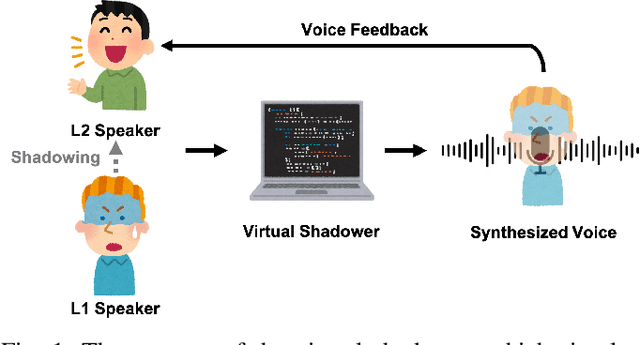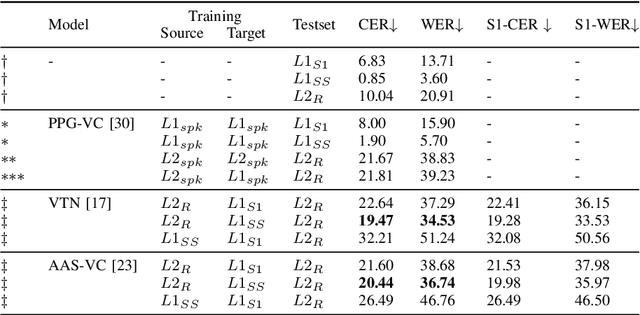A Pilot Study of Applying Sequence-to-Sequence Voice Conversion to Evaluate the Intelligibility of L2 Speech Using a Native Speaker's Shadowings
Paper and Code
Oct 03, 2024



Utterances by L2 speakers can be unintelligible due to mispronunciation and improper prosody. In computer-aided language learning systems, textual feedback is often provided using a speech recognition engine. However, an ideal form of feedback for L2 speakers should be so fine-grained that it enables them to detect and diagnose unintelligible parts of L2 speakers' utterances. Inspired by language teachers who correct students' pronunciation through a voice-to-voice process, this pilot study utilizes a unique semi-parallel dataset composed of non-native speakers' (L2) reading aloud, shadowing of native speakers (L1) and their script-shadowing utterances. We explore the technical possibility of replicating the process of an L1 speaker's shadowing L2 speech using Voice Conversion techniques, to create a virtual shadower system. Experimental results demonstrate the feasibility of the VC system in simulating L1's shadowing behavior. The output of the virtual shadower system shows a reasonable similarity to the real L1 shadowing utterances in both linguistic and acoustic aspects.
 Add to Chrome
Add to Chrome Add to Firefox
Add to Firefox Add to Edge
Add to Edge